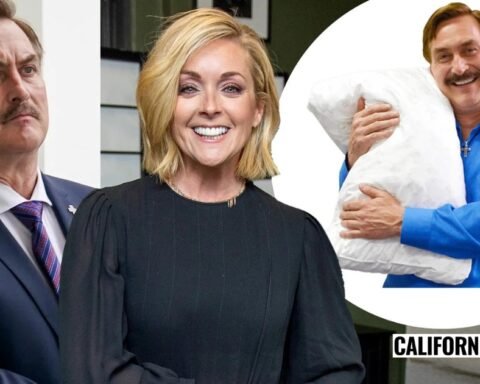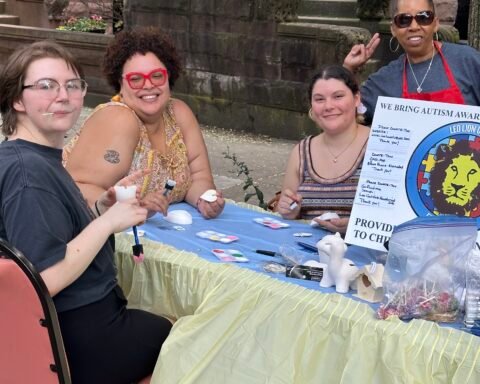Just a bit over thirty miles above the Mason-Dixon Line, where South kisses North and the East parts with the West, there is a rare breach in the Interstate Highway System, where motorists traveling I-70—either from or onto the Pennsylvania Turnpike—are forced into an intentionally generated cosmic vortex, an interdimensional portal in the unincorporated non-place of Breezewood, Pennsylvania. This segment of U.S. Route 30 is an awkward, unnecessary, doubled-back stretch of no-man’s land regulated by traffic-lights and lined with the commercial detritus of late capitalist dystopian American neoliberalism. In recent years, a 2008 photo of the strip has been immortalized in meme form, though even more official channels recognize how dystopian the place is, with the official website of the U.S. Department of Transportation noting that “Many a motorist… after giving thanks to a higher authority for their blessings, has asked a lower authority to ensure a very warm spot in the afterlife for the highway engineers who conceived this design.”
Despite such seeming approbation, this damned half-mile stretch of gas-stations, motels, fast food restaurants, and tchotchke shops exists on purpose. When the interchange was built, Section 113 of the Federal-Aid Highway Act of 1956 stipulated that, in order to receive federal funding, the Commonwealth of Pennsylvania must stop collecting tolls. Legally, such funding could only be used if the project “will have some use irrespective of…toll road, bridge, or tunnel.” But the state wanted the revenue, so, with plucky Keystone ingenuity and gentle corruption, it decided to create this curlycue nightmare ribbon which gave drivers the illusory choice of either the Turnpike or U.S. Route 30 (the once celebrated two-lane “Lincoln Highway”). That way, the Turnpike Commission could continue to both collect tolls and enjoy the largesse of the FHA.
More: Pittsburgh’s Broken Bridge is a Warning Sign
In that American tradition of combining governmental chicanery and corporate cunning, the 0.3 mile terrae incognita between I-70 and the Turnpike entrance became a dense strip of depressing chain businesses and roadside attractions. Now that the federal law has long changed, I-70 could be seamlessly connected to the Turnpike with no alteration to tolling, but the loss of revenue where close to four million travelers pass through every year would be immense. Besides, Bedford County (where the strip is located) would have to agree to such an alteration, and, as the jurisdiction’s planning director told the New York Times in 2017, “it’s just not an issue that really appears on the radar for us.” Symbolically, this convoluted non-crossroads is the most American place on earth.
If you’re the sort of person who is terminally online—Twitter being the spiritual equivalent of being stuck on Route 30—but you’ve never visited Breezewood in real life, you’re still likely familiar with its grim skyline. A photograph of Breezewood taken by Edward Burtynsky in 2008 has become a staple meme in certain online communities. The image is a perfectly framed composition of the Breezewood vista: dominated by an Exxon station, with a line of neon receding behind it in the form of a Shell Station, a Quiznos, a Perkins, a Pizza Hut, a Subway, a Starbucks, a Sunoco, a Taco Bell, an IHOP, several motels, a warehouse advertising “Gifts and Souvenirs,” and something called the Gateway Conference Center, all of it presided over by the giant, Mammonish Golden Arches of McDonald’s and framed in the background by the gentle green slope of the ascending Alleghenies. It’s Andy Warhol filtered through Hieronymus Bosch, weirdly beautiful art that’s as commensurate with the governing faith of our moment as Michelangelo’s Sistine Chapel’s ceiling was with the Renaissance. As the good folks at Know Your Meme explain, the “photo and the town itself has been associated with… commentary about the supposed lack of American culture or the effects of unfettered capitalism.”
As with all things memetic, there are varying degrees of cleverness. The most obnoxious iterations are among so-called “tankies,” unironic Soviet apologists. One such example captions the picture by claiming that “you look at the capitalist architecture and it’s just this.” (I’m no market apologist, but I would have to observe that, for example, neither Art Deco nor Art Nouveau appear in the photograph.) Another writes, in a strange biblical inflection, “this is the outside you have made.” A more discerning 2018 tweet claimed that “if youve never been to the US then this is how it looks alot of the time.” (Of course, contrary to @BombermanHero’s contention, most of America doesn’t look like this, even if the photo could have been taken anywhere, because Breezewood is obviously not Central Park nor the Redwood forest.)
But let’s not nitpick the details. Whether or not every square inch of the United States looks like Breezewood is irrelevant, for there is a fundamental truth about the interchange, which is that it’s more of a mood than a place. Breezewood exists for no other reason than to make money. Spiritually, it is a monad reflecting the absolute worst of capitalist excess, the toxic food and the soul-deadening landscape, a perdition where everything you want can be supplied, provided that what you want is available at Sheetz. It traps eighteen wheelers and tractor trailers, automobiles and SUVs in its purgatory, sometimes for hours, as they emit carbon dioxide into the rapidly heating dusk of the Anthropocene. What most online commentaries get wrong about the Breezewood picture is that they’re far too literal—what the image actually signifies is not representation of any place but a glimpse at the unfiltered American Id.
More: Why Pittsburgh Needs the Paris Agreement
I’ve served time on this lost highway: family trips to Baltimore’s Inner Harbor, school field trips to the National Mall, coming back from Annapolis after visiting a high school friend. Stuck along Route 30 and looking out at the blasted flotsam that lines the road—bits of busted out black rubber tire and broken glass, churned concrete and chunks of gravel—the stunning neon monotony of the place gives me an existential vertigo. Breezewood is, of course, an incredibly ugly and horrible place, but it’s the placelessness that makes the picture so eerie, the sense that this is a simulated hyperreality. The French post-structuralist philosopher Jean Baudrillard wrote of “the desert of the real,” in which reality has been replaced by something which is somehow bigger than reality, an artifice, a simulation. He described Disney World as an example of this simulacra, but, had he ever traveled down Route 30, he’d have realized the theme park is just grandiose and obnoxious; by comparison, Breezewood makes Disney World seem like a journey to the very heart of authenticity.
For almost two years, the last restaurant I had eaten in was the Breezewood McDonald’s, pulling into the radiating little pre-fab cottage late at night in early March of 2020. A parking lot with cars that had Punisher Skull decals and “Make America Great Again” bumper stickers; inside, exhausted clientele, even more exhausted workers and the stench of French fry grease and Purell. The floor was sticky, the bathroom was dirty, the lights were glaring. Doom-scrolling through Twitter, I read about the barricaded city of Wuhan, about the president mocking “Kung Flu,” about the thousands of body-bags being purchased by the New York City Health Department. I came across articles about the emergence of the conspiratorial QAnon cult, the increase in far-right extremism throughout the United States, and the climate, always the climate.
Walking back to my car, past the scrubby hill next to the parking lot—a rare pool of blackness in this otherwise glowing town—I was momentarily blinded by headlamps. A group of state police were precariously climbing up the hill, and I could hear them yelling out the name of somebody, I assumed a child who’d wandered off and gotten lost in the ramble. Several other bored-looking officers stood by their cars, engrossed in their phones. Looking back at the windows of the restaurant, nobody inside seemed aware of this ongoing potential human tragedy occurring just yards away. Anesthetized, oblivious, unconscious. The most accurate of the Breezewood memes was the first one, which appeared on IMGUR in 2012. It simply said: “Welcome to America.” I got in my car and drove away.







